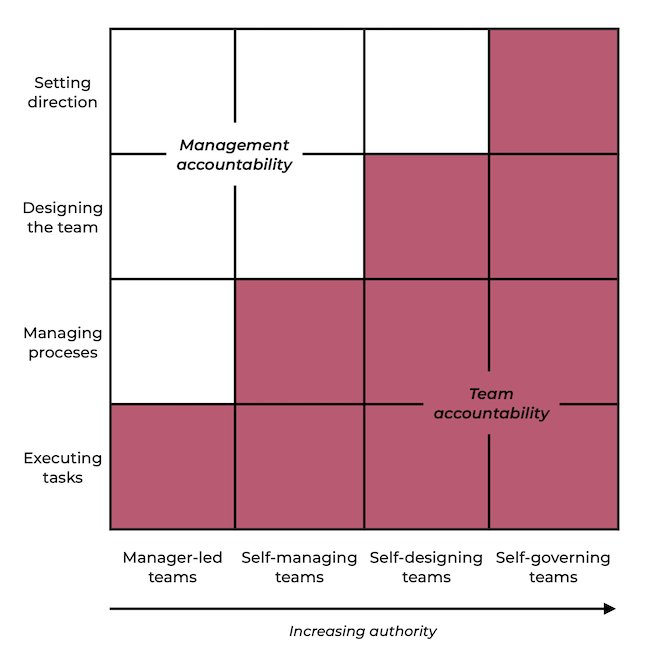
This vibrant illustration captures atomic structures with electrons orbiting, highlighting the dynamic interactions at the molecular level in a stunning digital format.
What Subatomic Particles Can Teach You About Leading Teams
Regardless of how you think the Universe came into being, everything that surrounds us is the result of self-organization. First, subatomic particles combine into atoms. Next, atoms join to form molecules and molecules later coalesce into gasses, liquids and solids. Left to its own devices, any natural (or human) system will self-organize into a stable configuration.
How Self-Organization is Defined
If self-organization is a fundamental property of the Universe, how can it be defined? This definition, taken from the book, Management 3.0 by Jurgen Appelo, works well for me.
Self-organization: the process where a structure or pattern appears without a central authority or external element imposing it through planning.
But what does self-organization look like for a development team? For a development team, self-organization means that the developers, testers, and analysts are responsible for coordinating and managing their own work. Activities such as identifying engineering tasks, managing dependencies, selecting what tools to use, figuring who will do what, etc., are the responsibility of the entire team and emerge as the team does the work.
The Business Impact of Self-Organization
- Greater efficiency: in a self-organizing team, it is the team’s responsibility to identify and eliminate impediments as they occur rather than wait for managers to decide if, and how, to respond to impediments. Research from McKinsey reveals that this self-organizing behavior results in teams that were 2X to 3X more efficient than non self-organizing teams.
- Increased employee engagement: in a self-organizing team, it is the team’s responsibility to come up with the best solution. Because the team members are closest to the work, they should be given the opportunity to make the majority of the decisions related to the implementation details. This ownership of the work enhances their sense of autonomy, mastery and purpose which increases motivation and engagement. Research from Gallop shows that boosting employee engagement increases profitability by 23%, improves productivity by 18%, reduces defects by 41% and decreases turnover by 43%.
- Improved customer centricity: a self-organizing team is often oriented around the needs of customers, end users and stakeholders. Research from McKinsey shows that orienting self-organizing teams around customer needs, i.e., becoming more customer centric, increases customer satisfaction by 20% to 30%. This reduces churn, improves loyalty and enables these firms to grow 2X faster than laggards in this area.
Self-Organization = Self-Management in Scrum
For as long as I can remember, Scrum has always emphasized the importance of self-organization. Self-organization is what makes Scrum work and how Scrum remains people first. Scrum without self-organization is nothing more than traditional management coupled with extreme levels of visibility tied to a never ending cycle of deadlines. Trust me…no one wants to work that way!
In 2020, the co-creators of Scrum implemented a number of changes to the Scrum Guide. One of those changes was the introduction of the term “self-management”. This change in language was motivated by information provided by Richard Hackman in his book, Leading Teams: Setting the Stage for Great Performances. Bottom line, though: nothing changed. Let me explain why.
In his book, Hackman created a matrix to illustrate the different levels of authority given to teams in four areas: executing tasks, managing processes, designing the team and setting direction. That matrix is shown in Figure 1.
Figure 1 – The Hackman authority matrix for teams.
In order to make Scrum consistent with Hackman’s observations, the co-creators of Scrum had to retcon the Scrum Guide by replacing all references to “self-organization” with “self-management”. Scrum Teams that were previously self-organizing, i.e., accountable for task execution and managing their own processes, were now to be called “self-managing.” Of course, management could choose to collaborate with the Scrum Team over how to design the team and\or set direction, but management remains accountable to complete these activities.
Thank you for reading this short article about self-organization and the benefits you could expect when you support the development of self-organizing teams. In my next article, I am going to share with you how to diagnose situations when a development team lacks self-organization and what action you can take to encourage more self-organization.






